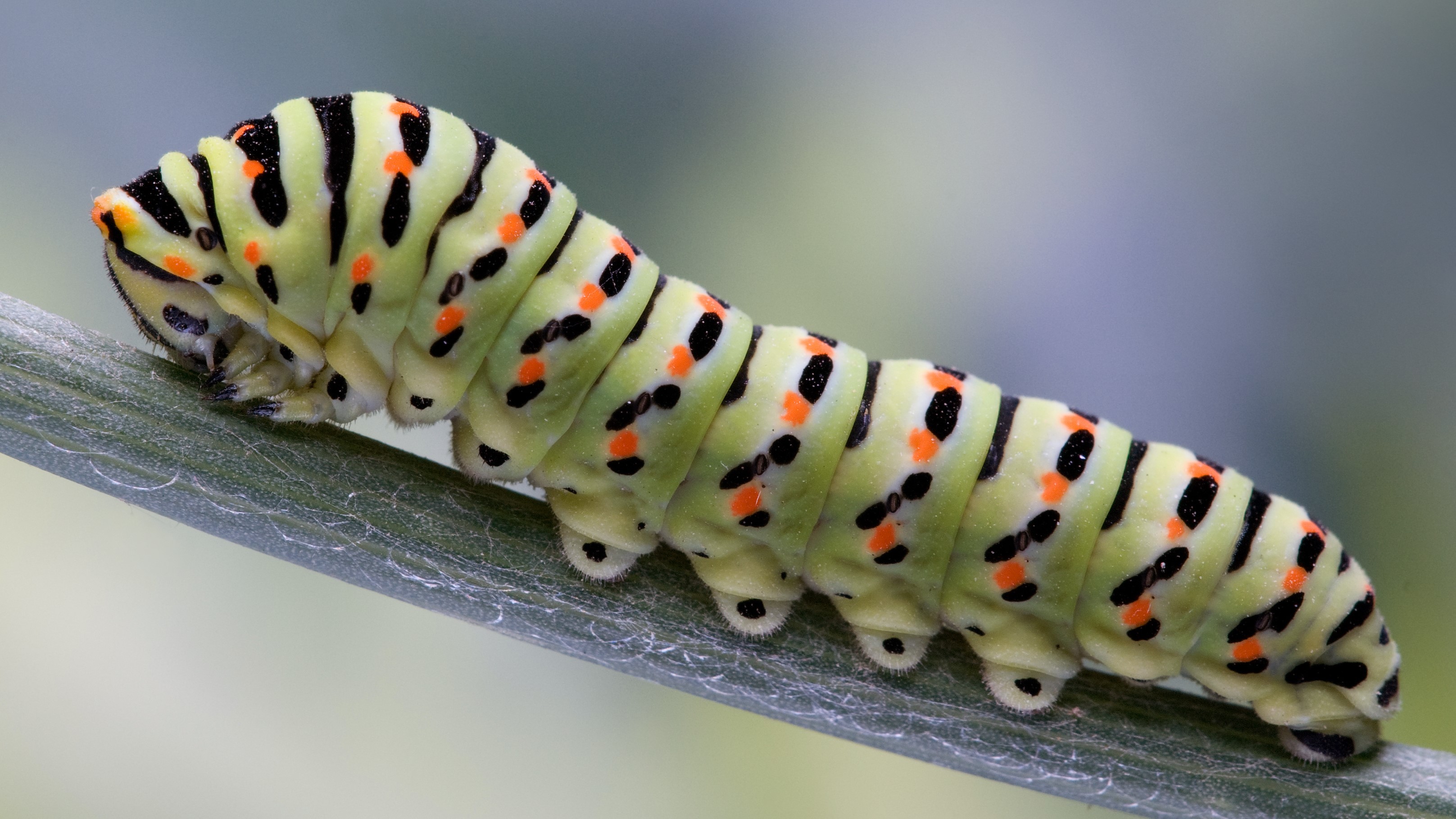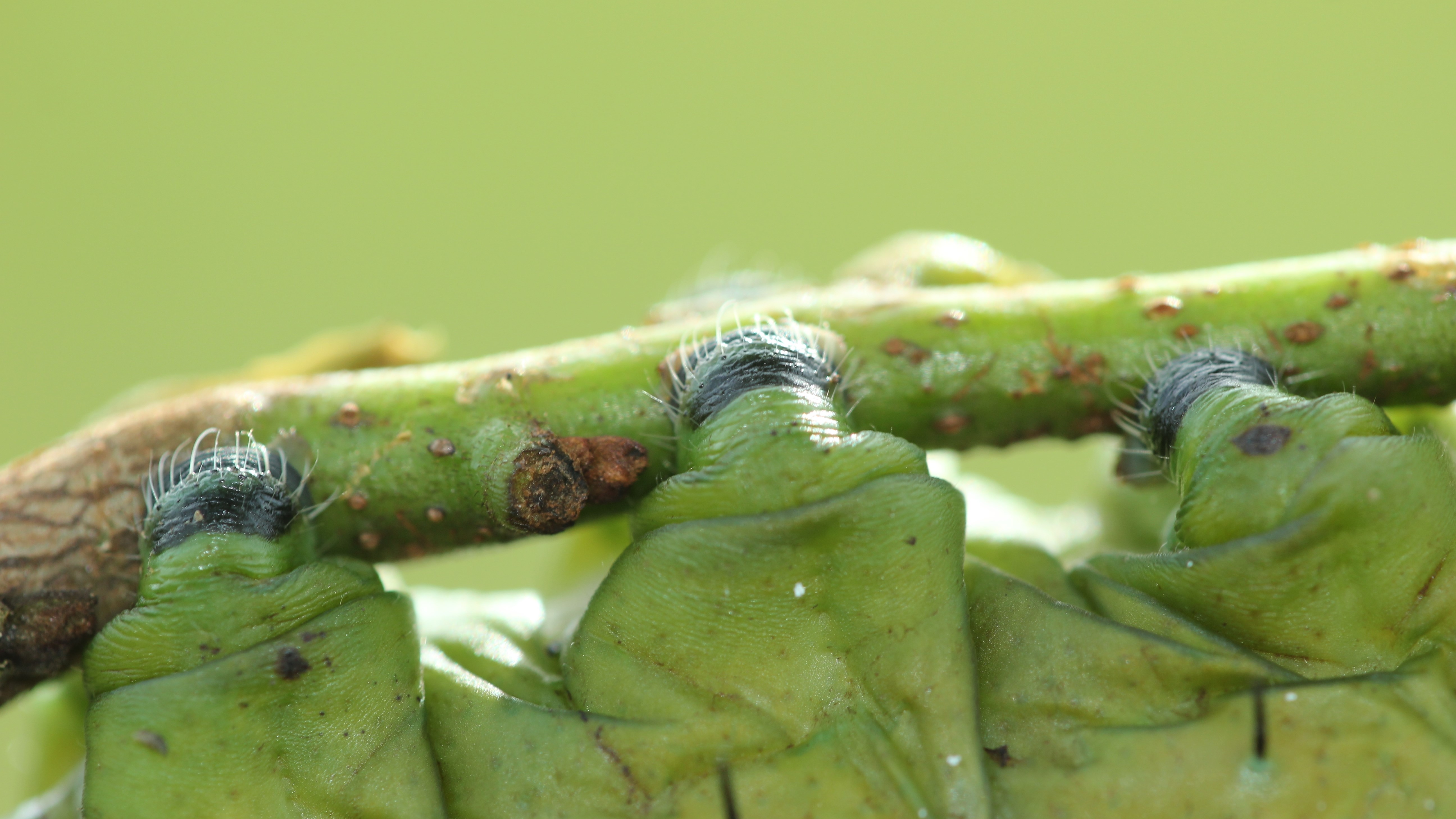Caterpillars evolved their weird chubby little 'prolegs' from ancient crustaceans
The extra legs caterpillars have appear have origins in the primitive crustaceans that insects evolved from during the Ordovician period over 400 million years ago.

Scientists have finally figured out where caterpillars got their extra sets of legs from. Turns out, these chubby little limbs originate from their crustacean ancestors over 400 million years ago.
Insects have six legs, except when they don't. Caterpillars — the larvae of butterflies and moths — have additional sets of limbs known as prolegs. So do the larvae and even adults of a handful of other insects. These prolegs pose an evolutionary mystery, and scientists have long grappled over how and why they got them.
A new study published Oct. 12 in Science Advances suggests these prolegs have origins in the primitive crustaceans that insects evolved from during the Ordovician period (485.4 million to 443.8 million years ago).
Prolegs are unjointed and feature sets of gripping hooks that function like spiky suction cups. Some species have as many as nine pairs. Unlike the six legs that most insects have, which extend from the thorax, or midsection, prolegs emerge from the abdomen. Their movement is mostly powered by hydraulic pressure — the movement of liquid into each limb.
Related: Fuzzy caterpillar has sting 'like being hit with a baseball bat," and now we know why
"Caterpillars are just eating tubes. They are maximizing their eating and growth potential. So they have evolved a gut-based body plan with a few legs to support the gut," co-author Antonia Monteiro, an evolutionary biologist at the National University of Singapore (NUS), told Live Science.

"Prolegs help them either grab onto substrates while the other legs help them feed or move them along the substrate," she said. After the caterpillar metamorphoses, the prolegs disappear. "When you become an adult insect, you don't need them. You have a beautiful body plan with massive wings and you just don't need those little gut supports. You have a different lifestyle."
Sign up for the Live Science daily newsletter now
Get the world’s most fascinating discoveries delivered straight to your inbox.
Scientists have previously proposed that prolegs relate to thoracic legs — saying they are extra sets of legs that disappeared over the span of insect evolution and were reactivated when they became useful again. Others believe they are completely novel adaptations.
A third hypothesis is that they are modified endites — internally facing leg structures that were apparent in ancestral crustaceans.
In the new study, the scientists tested the manner in which genes direct the growth of these appendages by altering the embryonic development of squinting bush brown butterflies (Bicyclus anynana). In doing so, they hoped to determine which of these hypotheses — if any — was valid.
By disrupting a gene that stipulates the placement of limbs and other structures while the larva is still in the embryonic stage, the researchers were able to elucidate the pathways by which prolegs develop. When the gene was partially disabled, precursors to typical legs as well as prolegs developed on the caterpillar's abdominal segments. When it was fully disabled, only the precursors to typical legs were present.
Because both types of limb were present when the gene was partially disabled, the researchers demonstrated that prolegs do not develop from the same types of cells as thoracic legs.
Rather, they seem to be modified endites. As crustaceans evolved into insects, endites were largely lost. But in butterflies and moths, the gene for them got reactivated, providing caterpillars with their prolegs.
The only other place that endites appear to persist in insects is in the mouthparts — the mandibles, maxillae and labium, which are actually modified legs themselves. The cutting edge of the mandible, for example, seems to be a highly modified endite.
"Prolegs have a lot of affinities with the head appendages in terms of the cocktail of genes that they express," Monteiro said.
So, structures that trace back to the crustacean ancestors of insects have been evolutionarily repurposed multiple times and for multiple functions — helping very hungry caterpillars move their ponderous bodies and sate their formidable appetites.

Richard Pallardy is a freelance science writer based in Chicago. He has written for such publications as National Geographic, Science Magazine, New Scientist, and Discover Magazine.










